Polymarket’s prediction markets are back and they are more plentiful than ever, both on Covid-19 and otherwise. Americans are not eligible to trade, but plenty of my readers reside elsewhere. And even if you can’t trade, the information component is still free.
Liquidity in any given market is not yet as high as I’d like, but it is still high enough to very much count as real money, provide insights on real problems and allow the astute reader who is eligible to participate to perhaps pick up some value.
To celebrate having all these new markets, and to take advantage of the information and the intuition pumps, I’ll go over what’s available, and say how far I’d be willing to trade a given contract or set of contracts on the assumption that I had access to the markets plus an adequate bankroll.
I’m going to limit this post to Covid-19 markets, because there’s enough value out there that I don’t want to postpone posting while I go through the other stuff.
One problem with the old Buy/Sell/Hold is that it is a conservative system. If something is trading at 50% and I say I’d buy it to 60%, I’m doing that because even after adjusting for the market’s opinion I still think the probability is substantially above 60%. Sometimes I’m uncertain for some reason and I’m avoiding making big mistakes, but my gut says it is much higher. Other times I’m not uncertain, so I’m looking for a smaller edge. This makes it tricky when the time comes to assign a Briar score or otherwise evaluate predictions mathematically.
My solution to that is that I’ll be including my fair price explicitly, in addition to what I would do, while keeping in mind that they are not always well-considered. Then one can either evaluate market performance (and stop where I say to stop) or go full Green Knight and see if my full estimates are superior.
And of course, note all of these carefully:
Markets tend to improve in accuracy over time.
That means lack of market movement over time is (some) evidence of accuracy.
Others are also reading this, so if you don’t get to it fast, that’s adverse selection for you.
If liquidity has gone up, that’s also evidence of accuracy, more adverse selection.
Many of these markets are time-sensitive, and their fair value changes over time rapidly even if nothing happens.
None of this is investment advice!
Without further ado, let’s see what we’ve got. Keep in mind, this was intentionally written and posted quickly, so mistakes do happen.
USA Case Counts
Market / fair:
Will the 7-day USA case count on February 1, 2022 be above…
200k: 96% / 98%
400k: 86% / 86%
600k: 28% / 30%
800k: 6% / 4%
1mm: 3% / 1.5%
The thing that jumps out at me right away is that this is placing the majority of the probability in a narrow range between 400k and 600k. With a full two weeks to go, this seems superficially seems overconfident. Yet there’s good arguments that it’s not, and on reflection I mostly agree.
How low could this plausibly go?
The Northeast already peaked last week, and likely so did some areas in the South. Let’s say the overall American peak could easily have been mid-month. One should expect a slower fall than rise, but not obviously by that much depending on distribution. The issue is that if different regions peak at different times, then that will decrease the slope of the downward trend until everyone has peaked.
On January 1, the case average was 416k, just above the 400k threshold. That was the week of Christmas and New Year’s, and we see a big jump on January 3 as the information back-fills. The jumps per day are pretty dramatic, so moving by even two days makes a big difference here.
Thus, we can consider going under 400k to require a symmetrical fall that matches the peak that requires a relatively evenly distributed peak that we mostly don’t see, plus a relatively early peak, and some amount of luck even with that depending on how big the holiday effect is. It does look like we’re peaking roughly now at mid-month, but this still seems hard.
86% chance seems like it is in the ballpark here, so I’d hold unless I was hedging risk, and I’m going to fully agree with it. A lot of things have to go right for this to happen.
The 200k line is almost a Can’t Happen short of massive testing disruption or some very large model error. There simply isn’t enough time for this, so I’m putting my fair for staying above 200k at 98%.
The 600k line is where it gets more interesting. How much has to go wrong for us not to get below this in time? One possibility is the peak is late. We were first over 600k on January 6, leaving 26 days to February 1. So if we peak on January 20, then even with a symmetrical retreat we’d still be above this. In addition, as I noted, I expect the turnaround to be asymmetrically a bit slow because of heterogeneity, but we did see a symmetrical peak in the last winter wave. And it’s hard, looking at the numbers, to think that we wouldn’t peak until the 20th. That seems very unlikely at this point.
Thus, the over here is a bet on substantially slower decline, and on different regions being at different points more than they were last year. Or it’s a bet that once testing is no longer a binding constraint, we’ll be catching more cases than we were a few weeks ago, and thus the number will look higher relative to old numbers and we’ll fail that way.
I’m going to go put the chance of this at slightly higher than market at 30%, but that definitely doesn’t motivate a trade.
For the higher thresholds, things have to be really weird. A few days ago I wouldn’t have been as confident, but the declines in the major eastern metro areas, and in many eastern states overall, is now very clear and it would be stunning if those trends did not continue. This peak is now pretty obvious.
Thus, the one million cases is very close to Can’t Happen, and the 800k cases isn’t that much easier. It’s still hard to make money selling such things, so nothing to be done yet, but a few more days of data would make these a lot less likely to happen if they go according to expectations (e.g. the CDC updates again and case average has started to fall).
Will the average case count be lower than a week ago on…
February 4? 87% / 97%
February 11? 89% / 97%
February 18? 91% / 97%
February 25? 89% / 97%
This is easier. Free money. Buy, buy, buy! I’d be highly confident in Jan 21st higher than Jan 28th, as noticed above, and have even that above 90%. The chance we’re not declining by the start of February is very small, the peak is happening now and if it isn’t now it is soon since it’s clearly already happened in some places. I’m no certain, no, but I’d buy all of these into the mid-90s with confidence. If anything, I agree that the 25th is slightly less certain than the 18th because of a potential Pi variant or other weirdness, but mostly this is pure model error territory, and giving the market some respect.
If nothing else, you can very safely buy all of these, then buy the 6% chance of over 800k cases/day, because if these do happen then you probably win the 6% bet as well, and winning the 6% doesn’t force you to lose these since a turnaround in late January would let you sweep both halves. You can lose both, but it’s hard. This is clearly the ‘good leg’ of that arbitrage.
On March 1, the US average case count will be above:
50k: 80% / 87%
100k: 60% / 50%
150k: 39% / 35%
200k: 38% / 25%
250k: 16% / 17%
300k: 18% / 12%
400k: 3% / 5%
So there’s some very very obvious free money here, since 150k and 200k at 1% apart and 250k and 300k are in the wrong order. Betting above 150k and below 300k the kind of trade one sometimes does without looking at the actual situation at all, and you’d probably also want to bet above 400k while you’re at it, again without looking. A month and a half is a long time in Covid land, 400k is above where we are now, and 3% is not very large. I had 3% for week-over-week declines in February, so this isn’t obviously wrong, but it doesn’t live in the universe of these other numbers.
You can, of course, do better if you pause to think first.
The entire month of February, plus what’s left of January, gives us more time to end the Omicron wave than it’s had to get going. The question now becomes, where should things ‘level off’ afterwards compared to the Delta situation beforehand?
It is a reasonable expectation that if we fall to the lower end of these daily case numbers, people’s levels of caution will drop dramatically, and go to zero or almost zero in many red areas. This would mean much safer conditions for a given person than existed prior to Omicron. So in order to believe we’d keep declining, you have to believe that enough people got Omicron (or boosted) to get us mostly to herd immunity.
Thus, I’d be more surprised than market to see us actually crash down below 50k, but less surprised to see it go below 100k. Setting in somewhere between 50k and 100k seems like a reasonably likely scenario for the long-term endemic outlook to the pandemic.
My curve of possibilities here basically asks where people are likely to end up before things are sufficiently relaxed that conditions become largely endemic, and my expectation is to center somewhere around 100k cases per day by March 1, with the number continuing to decline slowly. I wouldn’t take these exact estimates too seriously of course, but I’m fine with the shape of the curve.
The best trade is definitely ‘picking off’ the 18% above 300k, and the second best trade is similarly ‘picking off’ the 38% above 200k. Buying the above 50k as a hedge also seems reasonable, but not exciting.
Will the USA case average be below 100k by…
February 15: 8% / 15%
March 1: 24% / 55%
March 15: 48% / 70%
April 1: 74% / 78%
April 15: 84% / 82%
Mary 1: 89% / 84%
Arbitrage alert! The March 1 market here is 24% to be below 100k, but it’s 40% to be below (60% above!) in the previous market group. That’s almost but not quite a pure arbitrage (since case counts could bounce back up, although that seems pretty unlikely to matter and I haven’t bothered doing math on that). I have the odds of being below at 50%, after adjusting for both markets, so I love the 24% here. I also like March 15 quite a bit, but I like it less, because I think there’s a chance that we go endemic at higher levels than that, which is why I’m leveling off around 80%. You only need one day to be below the threshold to win, so the chance has to go up over time rather than level off.
Other Covid
Chance of mask requirement on 8 Nov for domestic flights: 45% / 45%
This got a lot of liquidity (68k!) so if your opinion is strong you can make a real statement. I had this at exactly 45% in my Omicron Post #14 before I saw the market, so I’m going to increase confidence in that estimate, declare victory and watch for updates on all fronts.
I’ll also note that no matter what anyone says, Nate’s original line on this was quite good. When you’re opening such lines with a shot in the dark, anything remotely close is pretty great, especially when you’re discovering an interesting question.
Will there be more full vaccinations by March 1 in the USA than…
211 million? 90%
213 million? 79%
215 million? 52%
217 million? 29%
219 million? 15%
Current total is 209 million, so these are 2/4/6/8/10 million additional finished full vaccinations.
I haven’t looked into the components and the answer doesn’t much matter in real terms, so I’m mostly going to ask whether this distribution looks reasonable or not and figure out what I’d do. My guess is that this is a rather predictable and regular thing from here, but that vaccinations are going to decline in pace once Omicron peaks, but that the 213 line is likely too low to not happen anyway. I’d be looking to sell the 215/217/219 lines, once I’d checked the math. The 219 might be pretty close to a Can’t Happen.
Who will have most weekly per-capita cases on March 1?
USA 39% / 35%
France 26% / 35%
Italy 30% / 15%
Spain 19% / 15%
So first off, that’s 113%, and the cost to trade is lower than the 13%, so there’s a pure arbitrage going ‘no’ on all four. You might want to go do that if you can’t think of something better, or you might not like the interest rate. Your call.
Also, there’s something obviously better, which is to look at a damn graph.
France has a lot more cases detected per day and is likely peaking later than we are. It had a lot more cases per day during the winter Delta wave. The United States had more cases before that wave. France is the ‘natural’ favorite here, and has had higher case counts than Spain and Italy for a long time. It seems unlikely for that to change. But the USA is more unique than the three European countries, and is more constrained by testing availability right now. I’m going to mark this as roughly even between them, and give Italy and Spain some chance because a month and a half is a long time, but I think it’s clear that France is a buy here, Italy and Spain are sales (Italy to 25% at least, Spain a little bit since it’s lower for no good reason I can see), and the USA is the weird one but given it adds up to 113% I’d still sell down to 37% or so.
I’d be sure to sell as much as I buy, to be on the right side of the 113% issue.
Will the CDC declare a variant of high consequence by…?
April 1: 14% / 8%
June 1: 24% / 11%
August 1: 31% / 14%
This is very much a wild guess rather than considered answers, but I do know these prices remain too high. If you look at how they got here, they clearly got ‘seeded’ high and haven’t been fully adjusted yet. Omicron didn’t count as a VoHC, so we’d not only need something to displace Omicron, we’d need it to somehow also count. I find that unlikely, and probably would have been lower still without a market anchoring me.
As usual, don’t sell all the way to your target, maybe sell halfway to your target, then probably stop.
Will another variant overtake Omicron by…
February 15? 3% / <1%
March 15? 14% / 3%
April 19? 26% / 7%
May 17? 35% / 14%
So far, the displacements have been Alpha, Delta and Omicron, and it’s been two years. Existing ones aren’t going to displace Omicron any time soon, so this is a new variant doing it. It’s been two years and we’ve seen three strains, but Alpha and Delta took over slowly enough that if you saw an edge of about that size, February 15th definitely doesn’t have any chance, and March 15th has almost none anyway, it would take another ‘Omicron-style’ advantage to happen, and the early signs of Omicron happened about five weeks before takeover, right now we hear nothing. Thus March 15 is a very narrow window. A simple quick model is something like, maybe we say there’s one every eight months, and one ‘Omicron-style’ that breaks previous immunity every two years out of that pool. Omicron-style we get five weeks notice, others we get an average of three months, so it’s basically another immunity break or it’s already probably too late for April 19, so it’s an every-two-years Poisson process (maybe higher now with more cases, but also less existing immunity to need to escape) and it has 1.5 months to April 19, 2.5 months to May 17 and then you also get some help from others so maybe you get something like the above?
That’s very fast. I definitely know I want to sell all of these.
Given how much value is there right now, I’ll post here, without doing more careful double-checks or looking at the non-Covid lines for now. Happy hunting! And please, please do argue concretely in the comments.




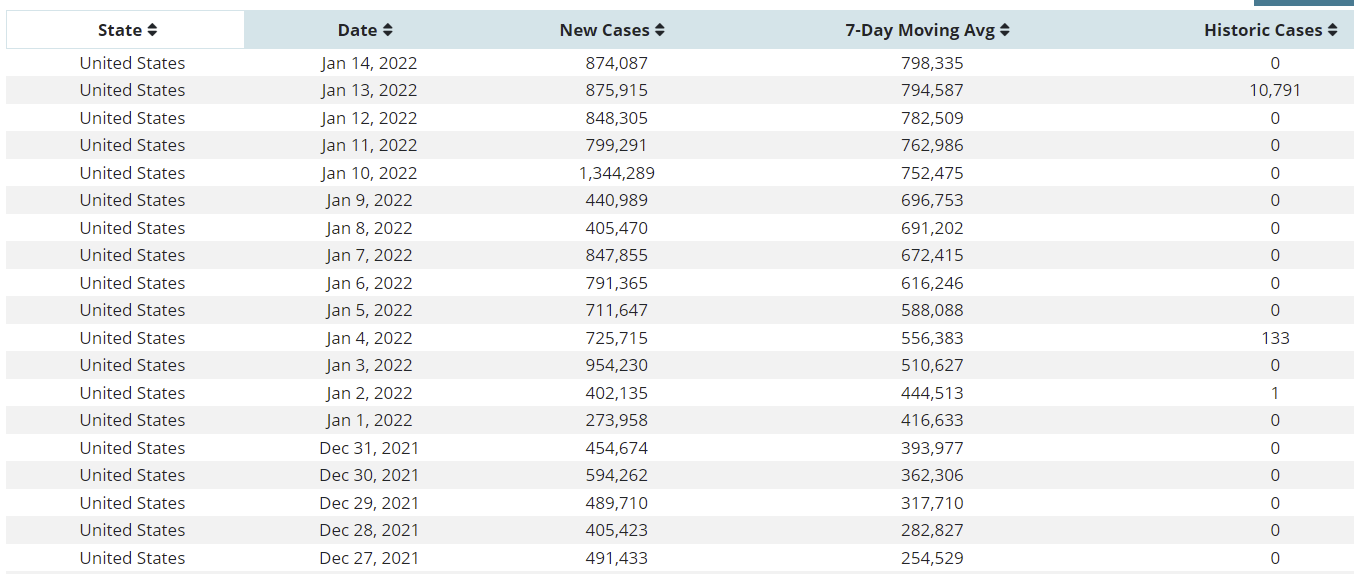
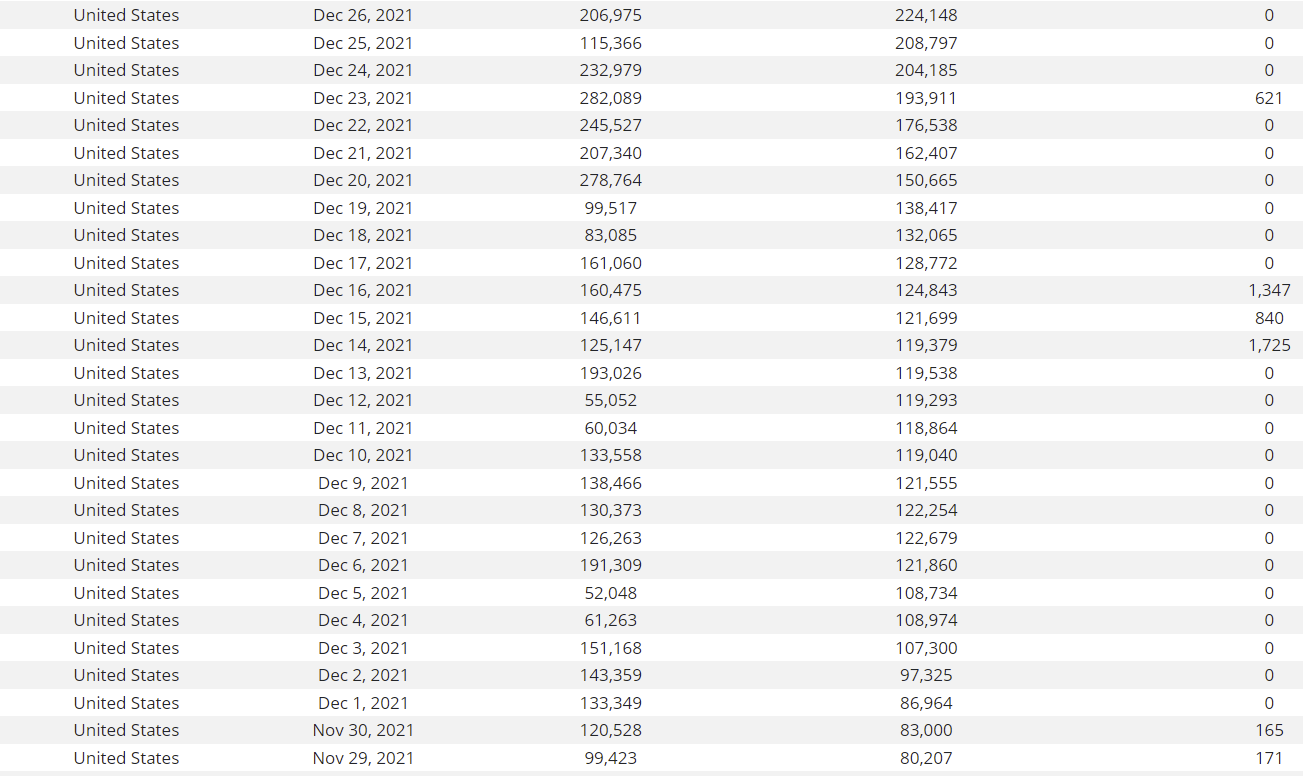
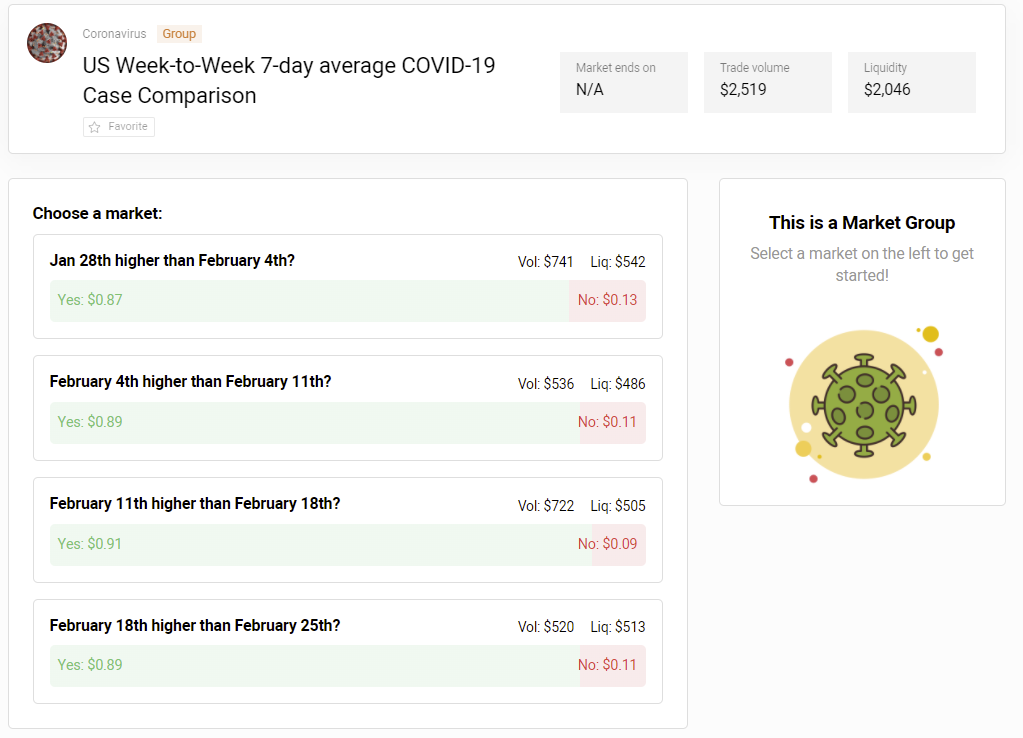
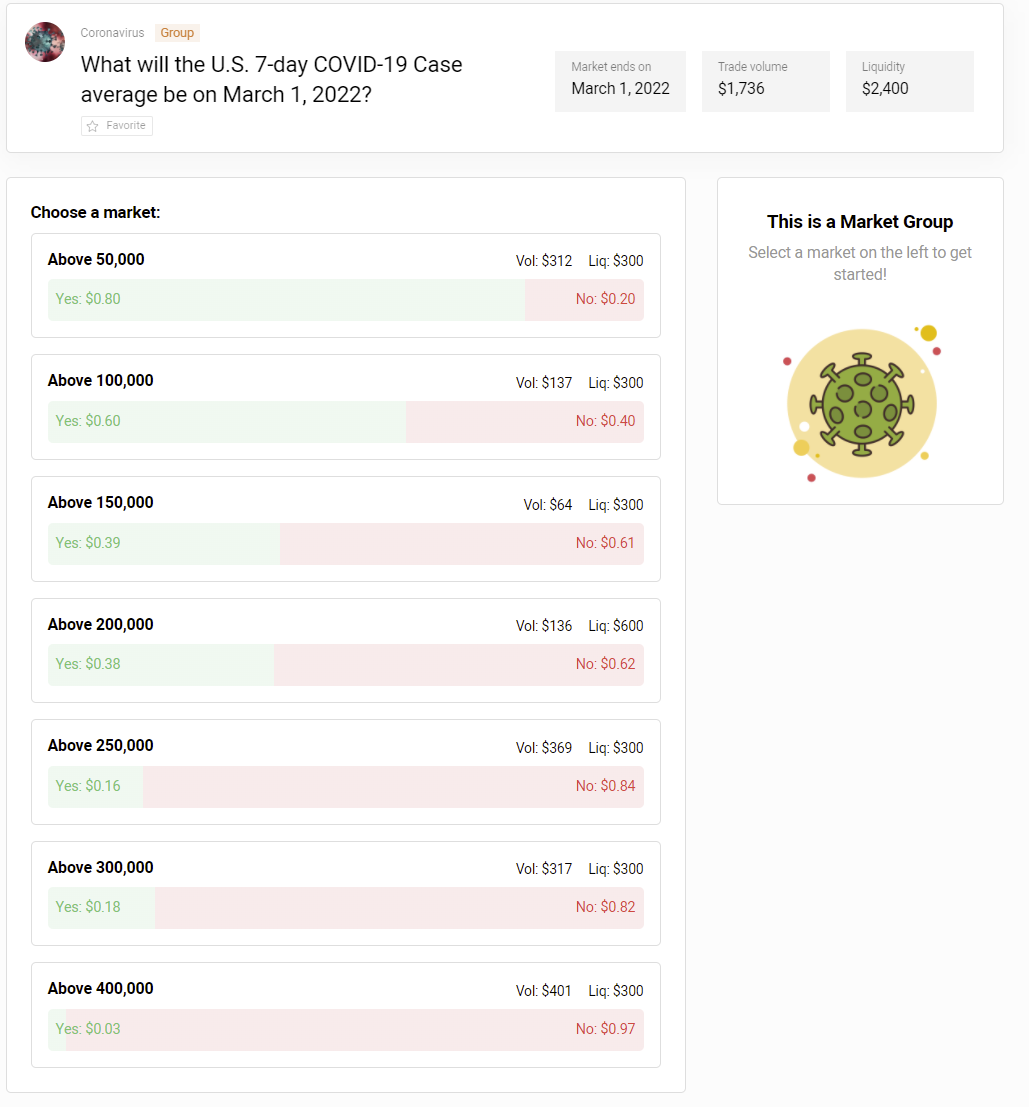
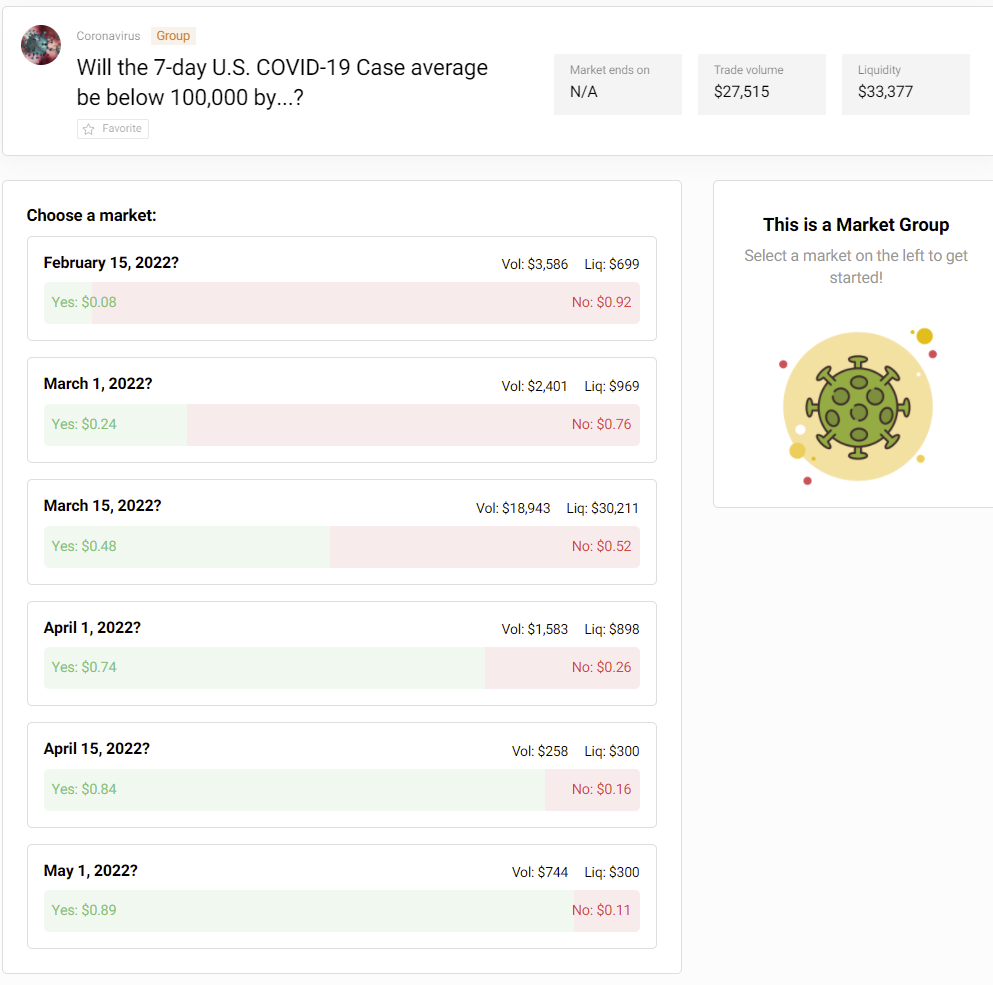
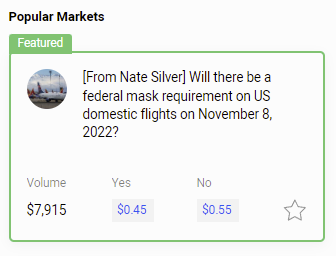
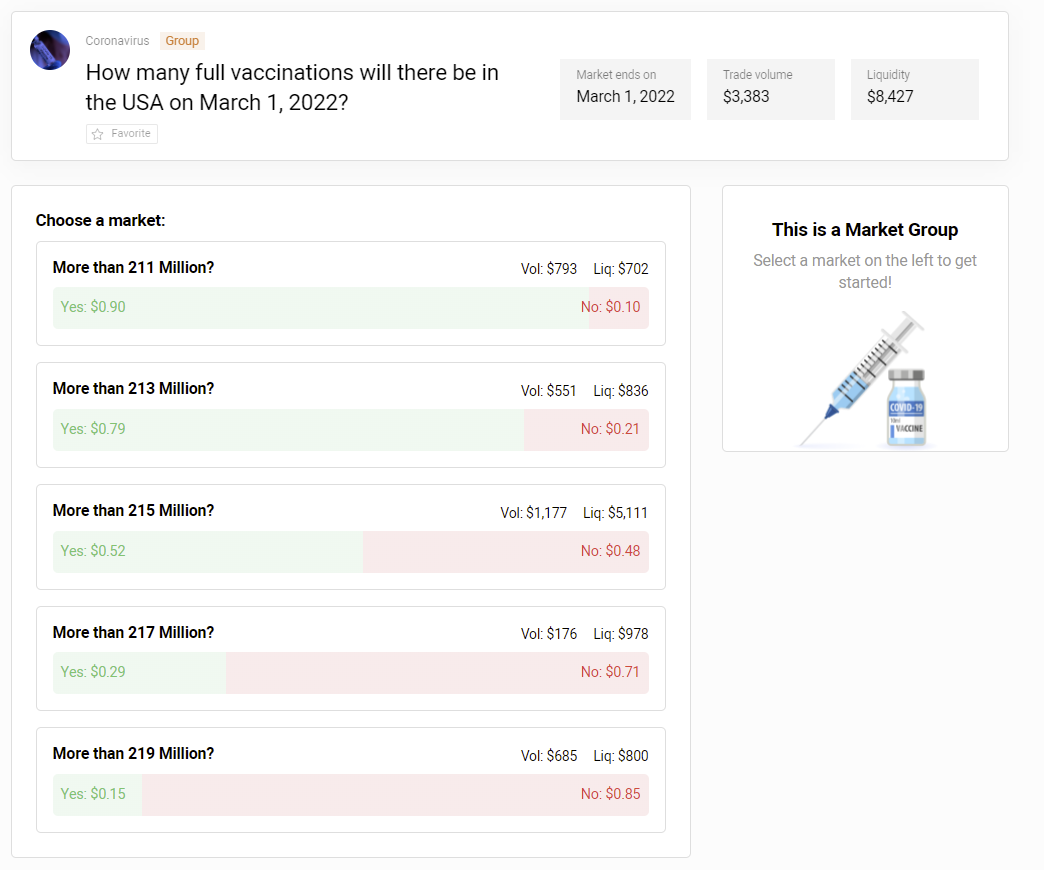
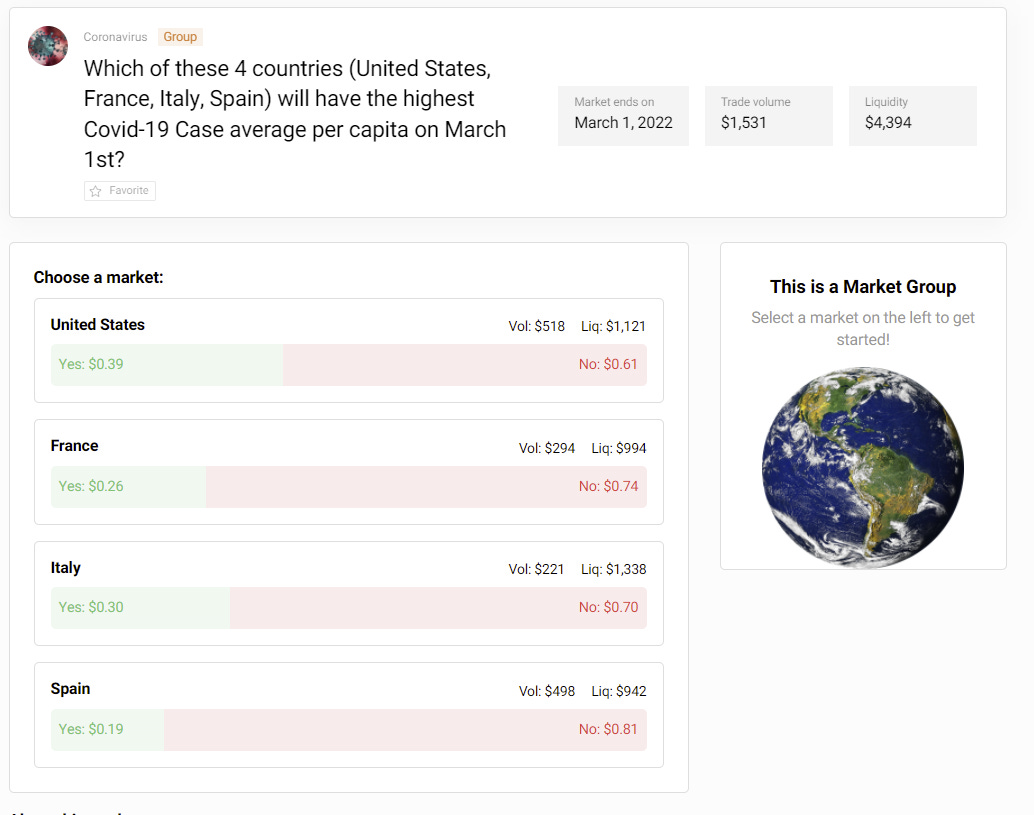
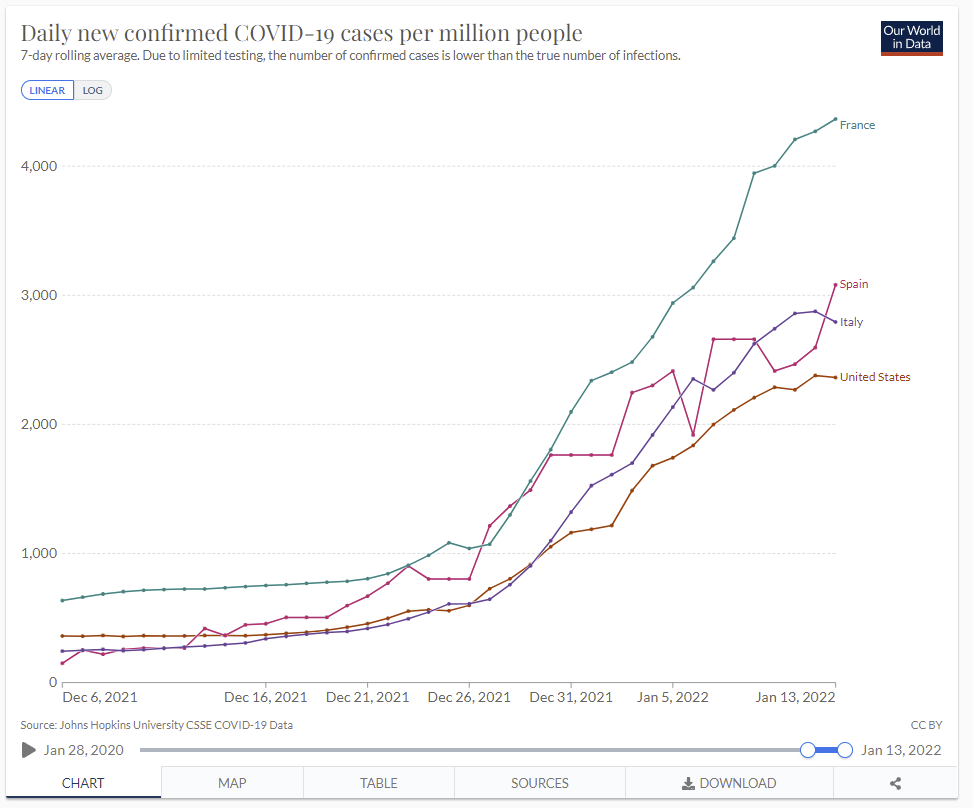
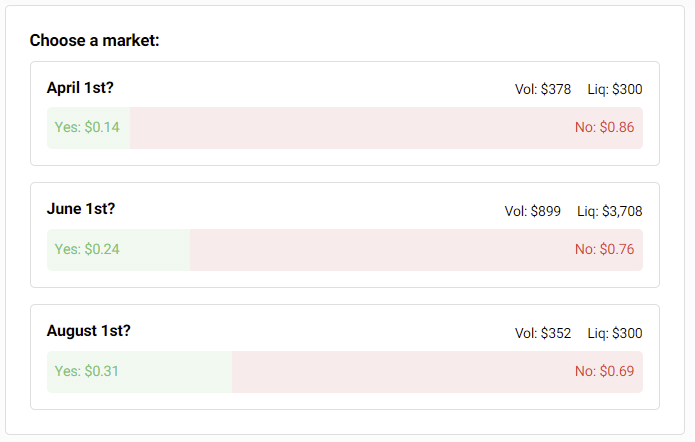
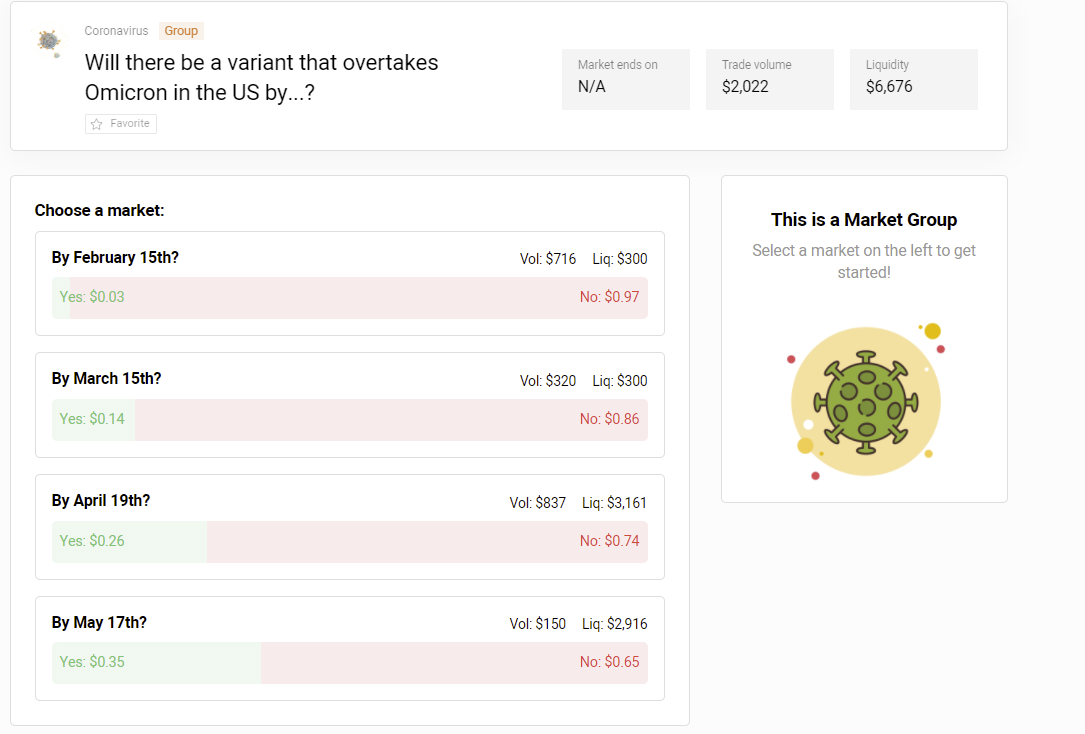
So, sorry for what's probably a dumb-ass question if one is familiar with trading, but I am not, so here goes:
When you say you want to 'sell' any of these, it's clearly that means you think there's a lower chance of these things happening than the market prices imply, so if you were actually holding contracts that would yield $1 if they happened, you'd sell them at this price, and down to some lower price (either your sell-to or honest-guess price, depending on what you're up to). I get that. However, I do not currently own any such contracts, and it doesn't seem like you do either. So, when you say you want to 'sell' these, is that equivalent to saying you want to buy the no contracts at their current price and then up to whatever the mirror of your sell-to price for yes is?
This, to me, seems like it would be the case, but I wanted to check if there's some crucial distinction between selling yes and buying no that I'd failed to pick up on (likely something to do with how fees are going to work out, I'd guess, or maybe with what seeing the prices does to your estimates of the probability?)
While I agreed with your impression that France will likely stay above ES/IT/US, I think you jinxed it: https://imgur.com/a/0paoS6Y
The very top of the graph is the last data point available when when you published the post.
It reminds me of a french philosopher known for his work on the topic "COVID modelling doesn't work, forget about it".
Maybe the French gave up and stopped testing. Or it's really related to the graph with substructure model from Lemoine, with France having maybe sparser clusters but higher connectivity between them (why that would be the case I have no idea).